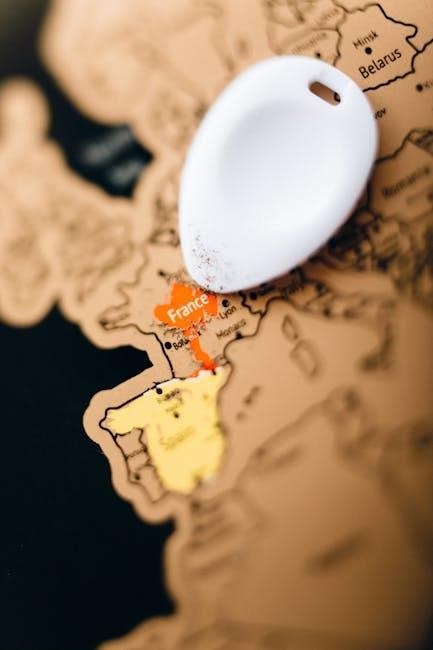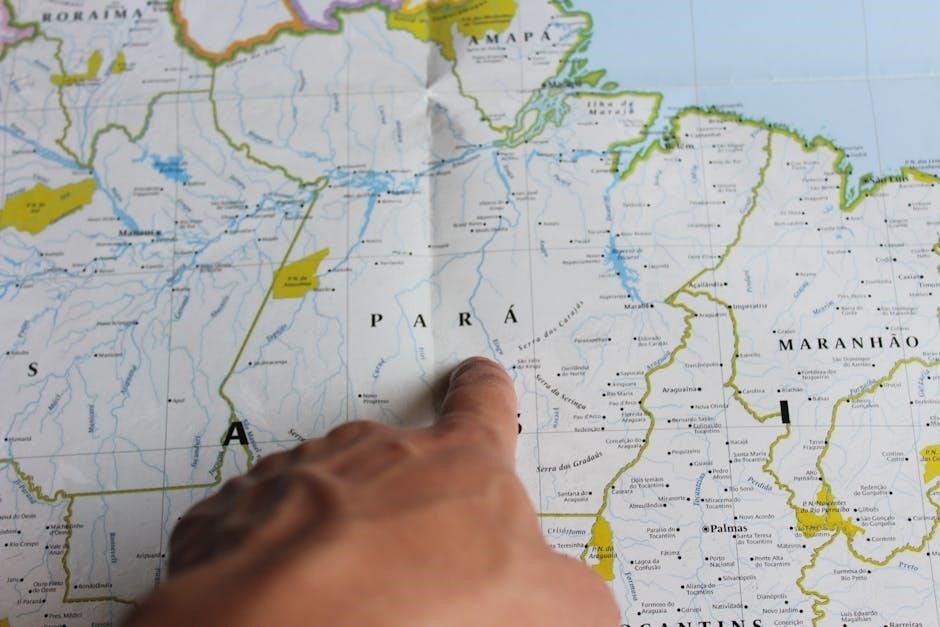that affect planting and gardening with specific temperatures and dates for optimal growth and harvest in this region typically․
Overview of Zone 7a

Zone 7a is a region with a moderate climate, characterized by warm summers and cold winters, with a relatively long growing season․ The geographic location of this zone plays a significant role in determining the types of plants that can thrive in this area․
Generally, zone 7a encompasses a wide range of areas, including parts of the United States and other countries, with similar temperature and climate conditions․
Understanding the overall characteristics of zone 7a is essential for gardeners and farmers to make informed decisions about planting and harvesting․
The unique combination of temperature, soil, and moisture in zone 7a supports a diverse range of plant species, from vegetables and fruits to flowers and trees․
By recognizing the specific features of zone 7a, individuals can create effective gardening strategies, taking into account the local conditions and climate patterns․
This knowledge is crucial for achieving successful harvests and maintaining healthy plant growth throughout the year․
Geographic Regions in Zone 7a
Zone 7a covers a wide range of geographic areas, including parts of the United States, Canada, and other countries․
These regions are characterized by similar temperature and climate conditions, with minimum winter temperatures ranging from 0 to 5 F․
The zone encompasses diverse geographic regions, including mountains, valleys, and coastal areas․
Some of the areas included in zone 7a are located in the southeastern United States, where the climate is generally mild and humid․
Other regions in zone 7a are found in the western United States, where the climate is drier and more varied․
Canada also has areas that fall within zone 7a, including parts of British Columbia and Ontario․
Understanding the geographic regions within zone 7a is essential for gardeners and farmers to adapt their planting strategies to the local conditions․
By recognizing the unique characteristics of each region, individuals can make informed decisions about planting and harvesting, taking into account the specific climate and soil conditions․

Includes general information and resources for gardeners with specific
details
and guidelines․
Spring Planting Dates
The spring planting dates for zone 7a are typically around late March to early May, depending on the specific weather conditions and temperature․
This period is ideal for planting a variety of crops, including vegetables, fruits, and flowers․
The last frost date for zone 7a is usually around April 15th, which means that gardeners can start planting warm-season crops after this date․
It is essential to check the weather forecast before planting to ensure that the soil has warmed up enough and the risk of frost has passed․
Gardeners in zone 7a can plant cool-season crops, such as broccoli, cauliflower, and kale, as early as late February or early March, about 4-6 weeks before the last frost date․
By following the spring planting dates for zone 7a, gardeners can ensure a successful and bountiful harvest․
Additionally, gardeners can also plant perennials, such as roses and shrubs, during the spring season․
With proper planning and attention to weather conditions, gardeners in zone 7a can enjoy a thriving and beautiful garden throughout the spring season․
Fall Planting Dates
The fall planting dates for zone 7a are typically around late August to early October, depending on the specific weather conditions and temperature․
This period is ideal for planting cool-season crops, such as lettuce, spinach, and carrots, which thrive in the cooler temperatures of fall․
Gardeners in zone 7a can plant these crops about 8-10 weeks before the first frost date, which is usually around November 15th․
It is essential to check the weather forecast before planting to ensure that the soil has cooled down enough and the risk of heat has passed․
By following the fall planting dates for zone 7a, gardeners can enjoy a bountiful harvest of cool-season crops, which can be harvested well into the winter months․
Some other crops that can be planted in the fall in zone 7a include broccoli, cauliflower, and kale, which can be planted in late summer to early fall․
With proper planning and attention to weather conditions, gardeners in zone 7a can have a successful and productive fall garden․
Fall planting in zone 7a can be a great way to extend the gardening season and enjoy fresh produce well into the winter․

Gardening in Zone 7a
Gardening in zone 7a requires understanding local climate and soil conditions for optimal plant growth and harvest in this specific region with varying temperatures․
Annual Minimum Temperature
The annual minimum temperature for zone 7a is a crucial factor in determining the types of plants that can thrive in this region․ According to the USDA, the minimum winter temperatures in zone 7a range from 0 to 5 degrees Fahrenheit․ This temperature range is critical in deciding which plants to grow and when to plant them․ The annual minimum temperature also affects the growth and development of plants, and gardeners need to take this into consideration when planning their gardening activities․ By understanding the annual minimum temperature, gardeners can choose plants that are suitable for the local climate and take necessary precautions to protect their plants from extreme temperatures․ This knowledge is essential for successful gardening in zone 7a, and gardeners should consult the USDA zone map to determine the specific temperature range for their area․ Using this information, gardeners can create a personalized planting guide․
Gardening Tasks by Month
Gardening tasks in zone 7a vary by month, with specific activities to be performed during each time of the year․ A monthly gardening calendar is essential to keep track of these tasks, ensuring that plants receive the necessary care to thrive․ In zone 7a, gardeners should focus on preparing the soil and planting cool-season crops in early spring, while warm-season crops are planted in late spring․ During the summer months, gardeners should concentrate on maintaining soil moisture, controlling weeds, and monitoring for pests and diseases․ In the fall, gardeners should harvest crops, clean up the garden, and prepare the soil for the next growing season․ By following a monthly gardening schedule, gardeners in zone 7a can enjoy a successful and productive gardening experience․ Using a combination of online resources and local expertise, gardeners can create a personalized monthly gardening plan tailored to their specific needs and climate․ This plan will help gardeners stay organized and ensure a healthy and thriving garden throughout the year․

Choosing the Right Plants
Selecting suitable plants for zone 7a involves considering climate and soil factors with online resources and local guidance to ensure optimal growth and success in this region typically always․
Top Plants for Zone 7a
To create a thriving garden in zone 7a, it is essential to choose plants that are well-suited to the region’s climate and soil conditions․ Many online resources and local nurseries provide guidance on the top plants for zone 7a, including vegetables, fruits, and flowers․ Some popular choices include root vegetables like carrots and beets, as well as leafy greens like lettuce and spinach․ For fruit, options like strawberries and blueberries are well-suited to the region’s temperate climate․ In terms of flowers, zone 7a gardeners often opt for blooming perennials like coneflowers and black-eyed susans․ By selecting plants that are known to perform well in zone 7a, gardeners can create a beautiful and productive garden with minimal fuss․ With the right plants, gardeners can enjoy a bountiful harvest and vibrant blooms throughout the growing season․ Using online resources and local expertise can help gardeners make informed decisions about the best plants for their specific climate and soil conditions․
Planting by USDA Zone
The USDA zone system is a valuable tool for gardeners, as it provides a framework for understanding the specific climate and growing conditions in their area․ Planting by USDA zone involves selecting plants that are suitable for the local hardiness zone, which is determined by the average annual extreme minimum temperature․ In the case of zone 7a, gardeners can use the USDA zone map to determine which plants are most likely to thrive in their region․ This approach helps to minimize the risk of planting species that may not be well-suited to the local climate, and can lead to more successful and productive gardens․ By consulting the USDA zone map and selecting plants that are recommended for zone 7a, gardeners can create a beautiful and thriving garden that is tailored to their specific region․ This approach also allows gardeners to take advantage of the unique characteristics of their local climate and soil conditions․



